(PHOTOESSAY) Piazza Maggiore: The Center of Life in Bologna
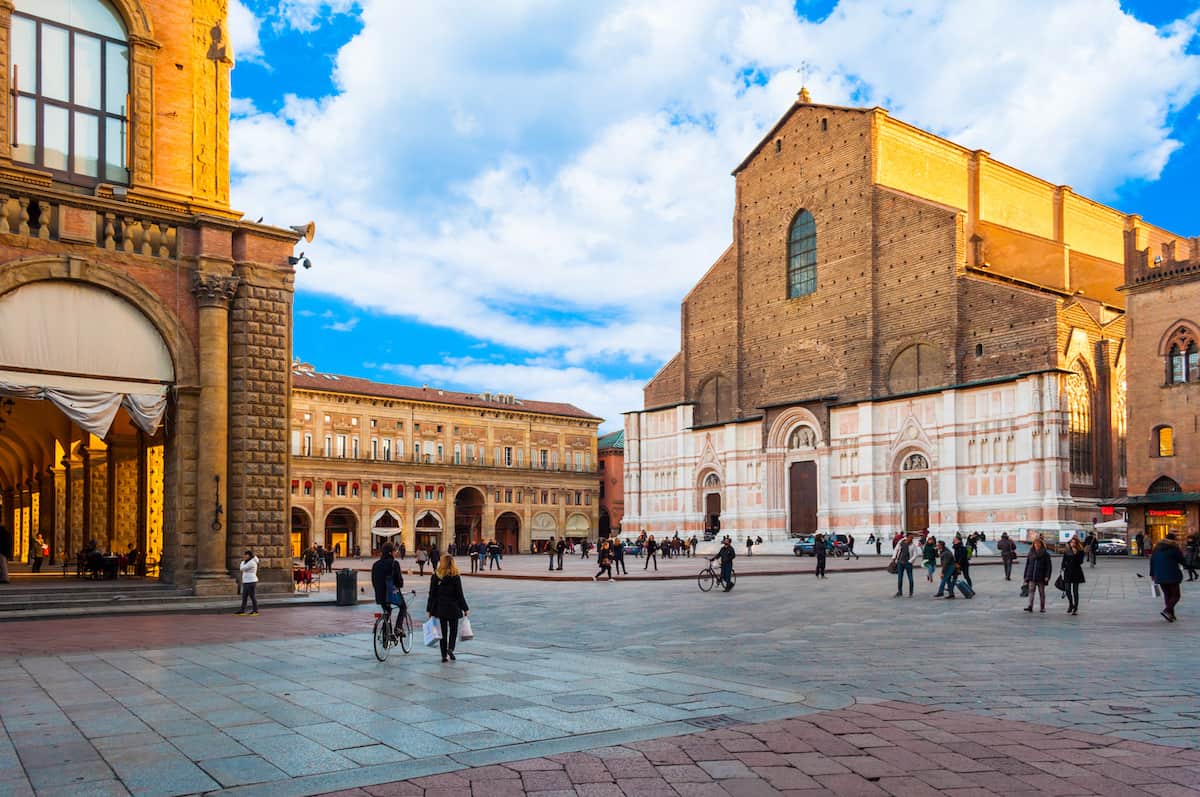
A peek at Piazza Maggiore, one of the most captivating piazzas in Italy
Located in the very oldest part of the city, the Piazza Maggiore is Bologna’s main square. It is surrounded on each of its four sides by some of the most important historical, governmental, commercial and religious buildings in the city.
This huge pedestrian square (almost the length of, and significantly wider than a football field) is a virtual living room that mirrors the social fabric of the vibrant community surrounding it.
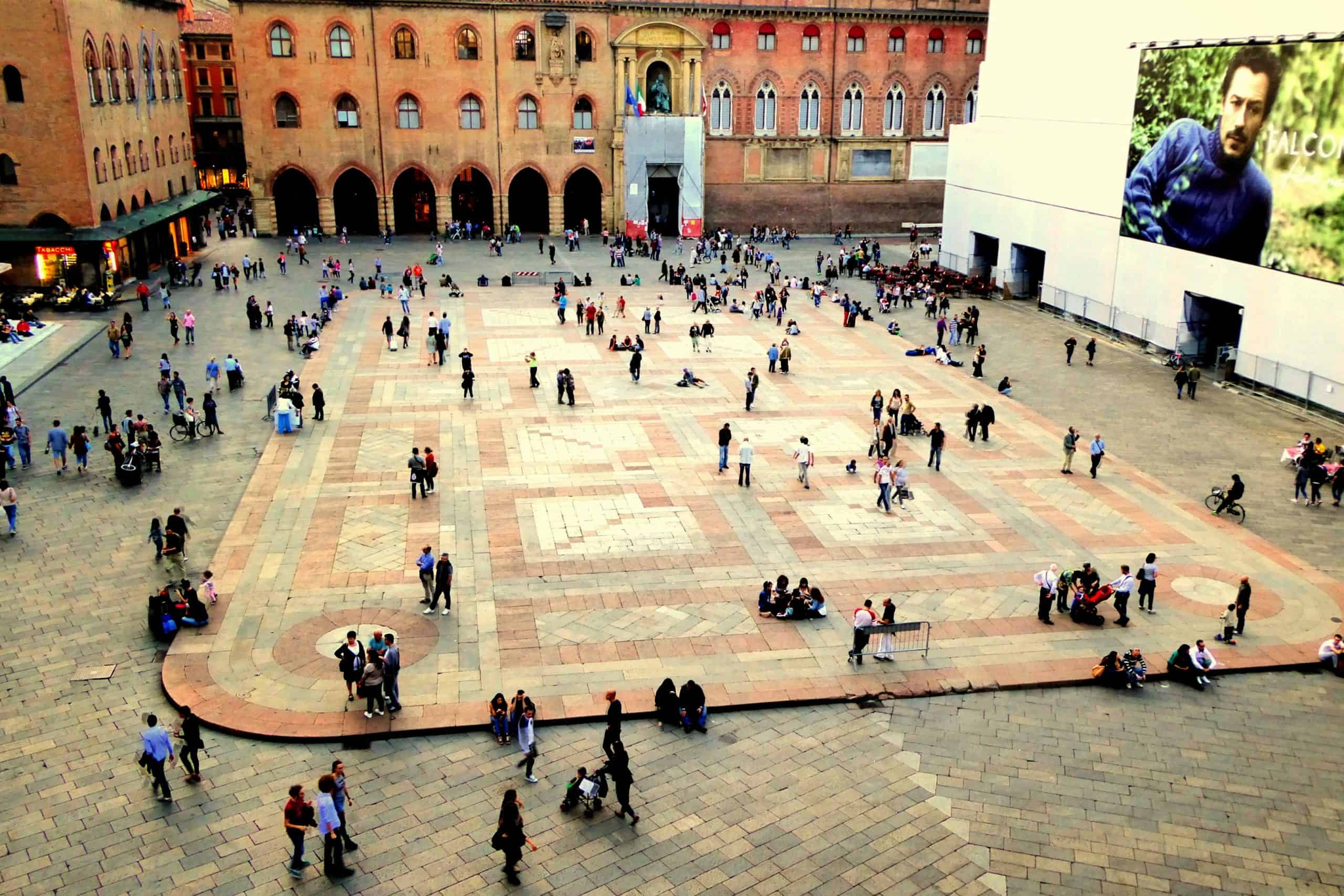
It’s where locals and visitors congregate all day and well into the nighttime hours. Although its shape and the welcoming stone “carpet” at its center remain fixed, the contours of the piazza seem to change from moment to moment as if it were a living, breathing creature.
Piazzas are commonly found throughout Italy and other European countries. (The word literally means, “square” although not all piazzas take that shape.) The most famous Italian piazza, perhaps, is the one in front of St. Peter’s Basilica in Rome.
However, we have fallen in love with the Piazza Maggiore. Admittedly, it’s the one we know best but we suspect it is also pretty exceptional compared to others. So after two prior visits to the city staying in nearby hotels, we rented an apartment in one of the ancient buildings with huge windows directly overlooking the square.
From our balcony perch, we were able to observe the constantly changing sights and sounds below us.
Brief overview of the square and its history
Once a grassy area, Piazza Maggiore first opened in the year 1200 and assumed its present form about 200 years later. In its earliest iteration, the site hosted horse races and tournaments.
Three sides of the piazza are lined with elegant porticoes, a small portion of the almost 40 km of magnificent porticoes in the city that led to its nomination as a UNESCO World Heritage Site. Aside from the architectural significance of the building exteriors, there are exceptional treasures inside.
Once home to the powerful guild of lawyers, the Palazzo dei Notai sits on the south side of Piazza Maggiore beside the Basilica of San Petronio, the fifth largest church in the world. The gothic basilica, which dominates other nearby structures in size, was built with a Latin-cross plan. It has an interesting history, too.
It was intended to be larger than St. Peter’s in Rome but reflecting Bologna’s longtime commitment to public education, the Cardinal decided to reduce its planned size and leave its façade unfinished so the money could instead be used in support of the University (which is now the oldest university in continuous operation).
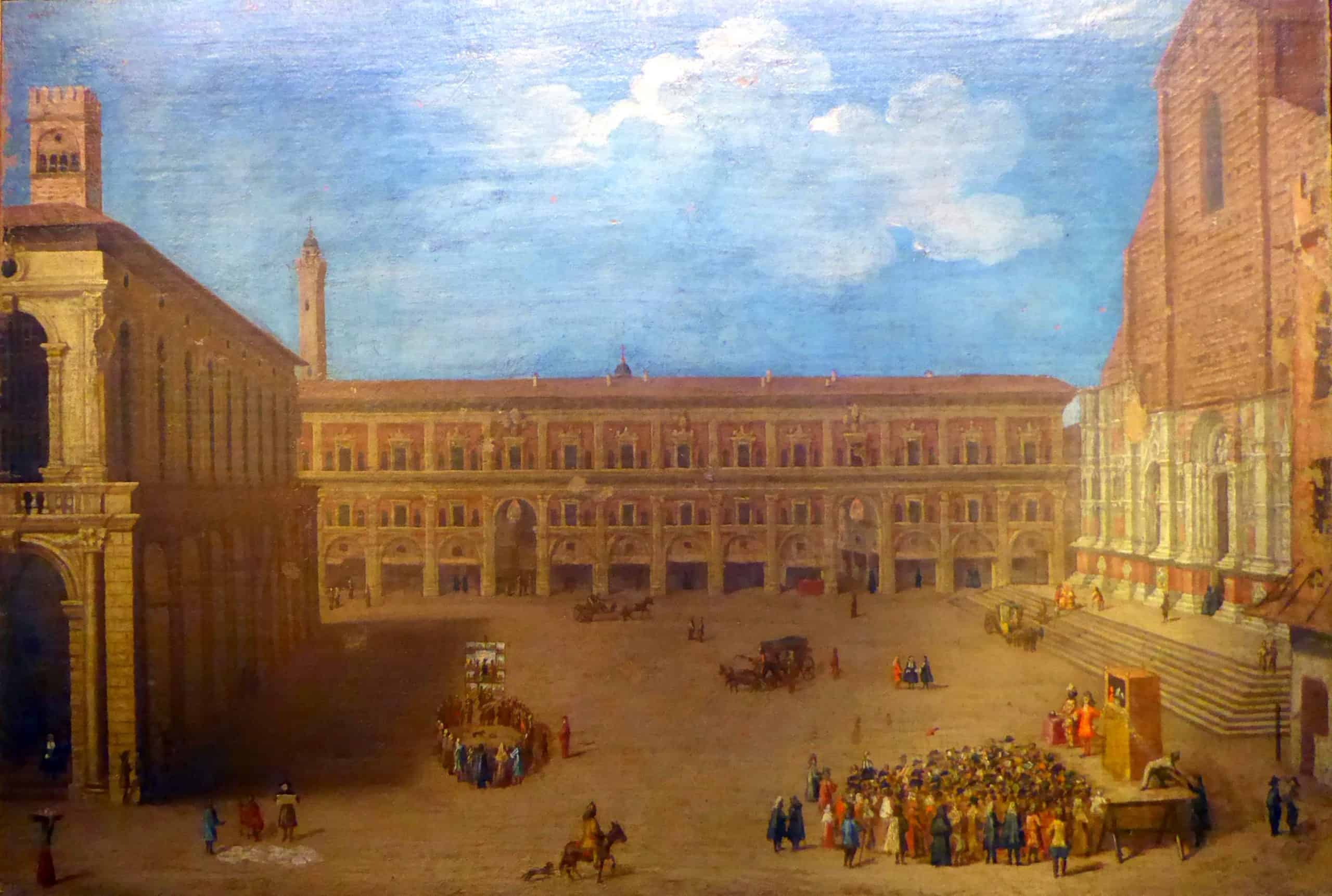
Because our stay in Bologna coincided with the celebration of the Festa di San Petronio (which falls on October 4th), we witnessed many colorful religious observances that were taking place in the square around that time.
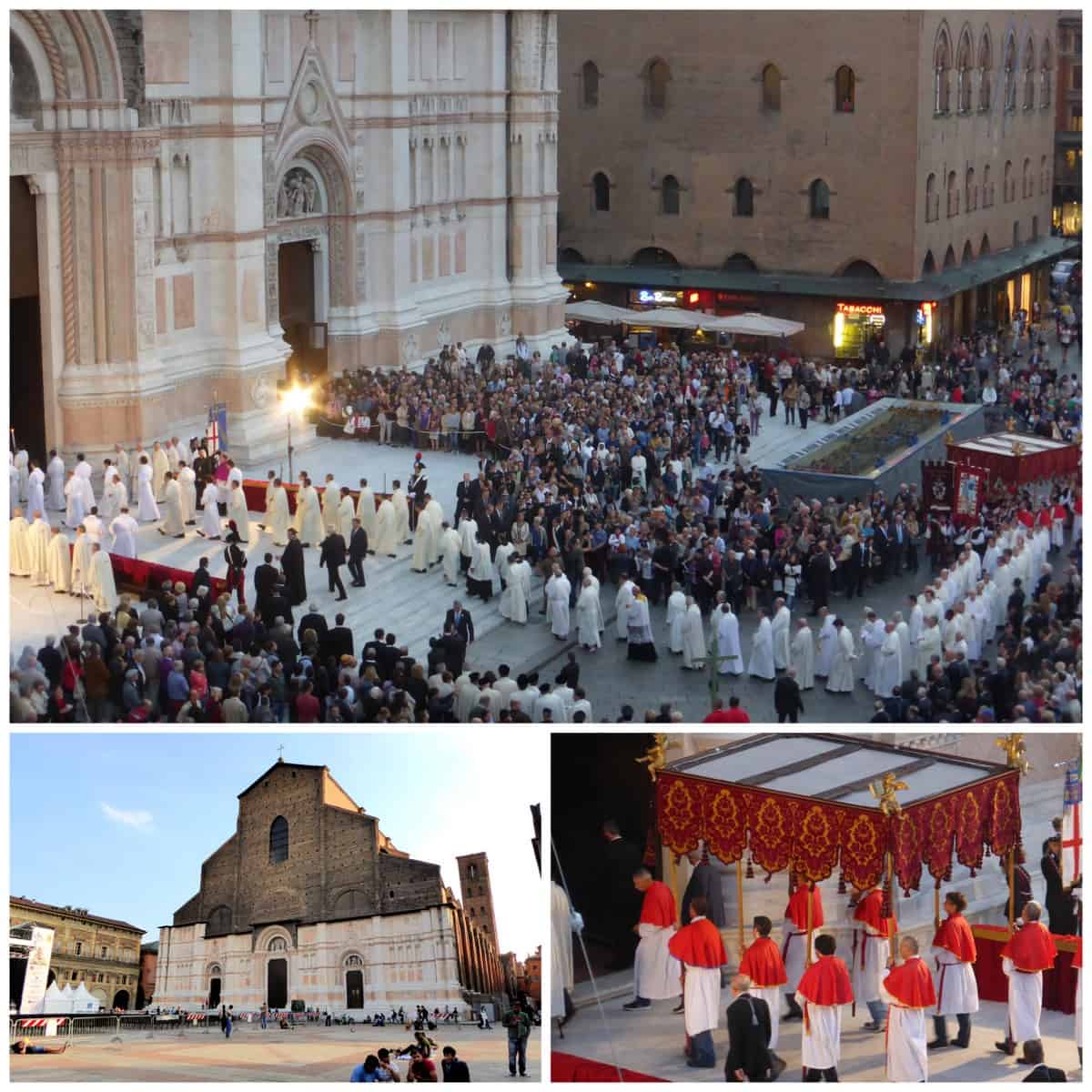
Most other times, the gracious steps leading to the church offer quasi stadium seating for events unfolding on the square.
Next to the church (on the west side of the square) is the Palazzo d’Accursio, which for centuries has served as the seat of the municipal government. Anchored by a 15th century clock tower, its main hall has Baroque frescoes dating back to the 1600s with five allegorical scenes depicting Bologna’s virtues.
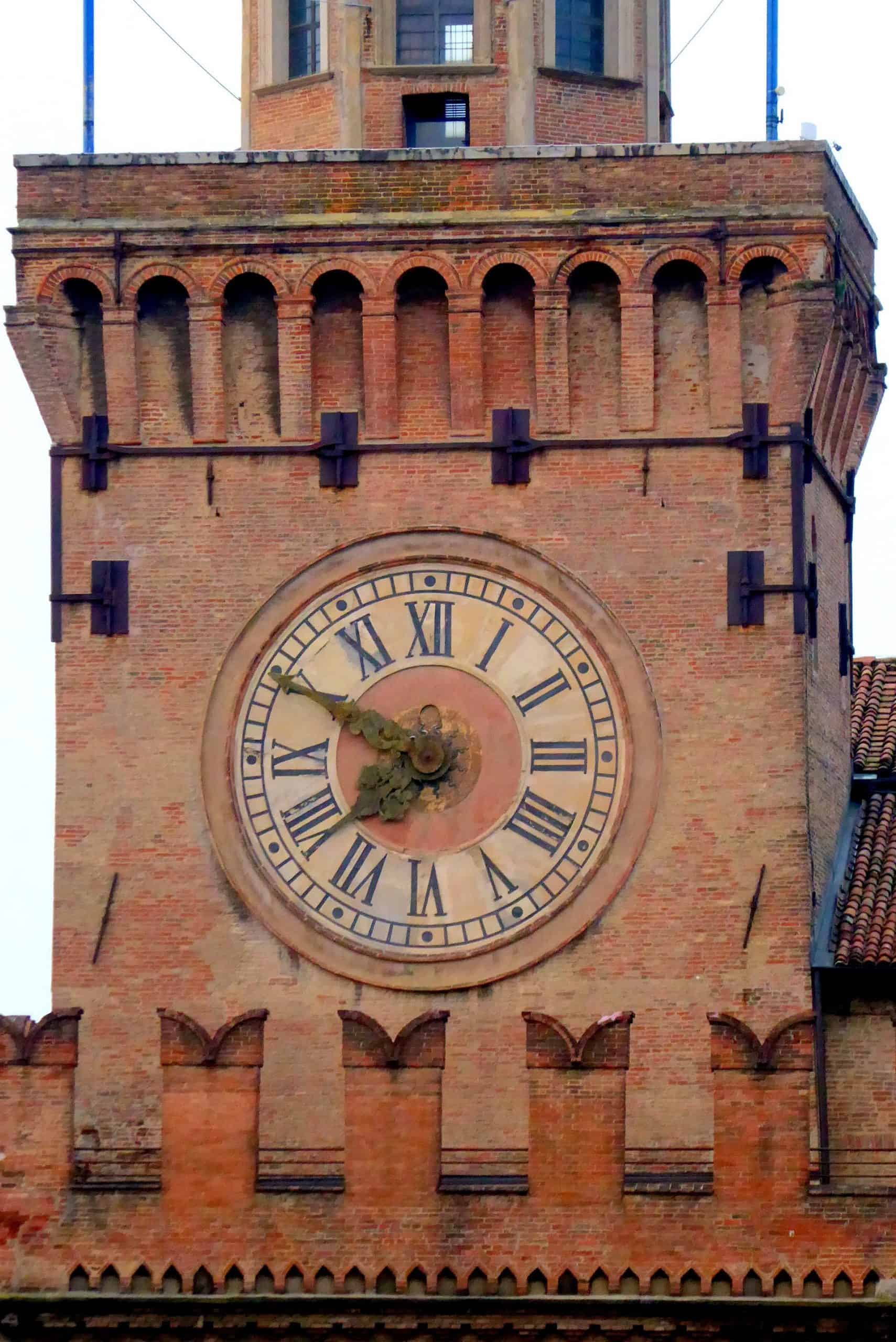
La Sala Borsa, the former trade center, now houses a modern, free, multimedia library with a transparent floor displaying archeological excavations beneath the building. Wrapped in a Falconeri advertisement, the building is the convenient location of Bologna Welcome, the official tourist information office in the city.
Finally, on the east side is Palazzo dei Banchi, once the home of moneychangers and bankers. Built in 1412, the porticoes on this side of the square have two arched entrances that lead to the busy market area behind them. The restored apartment where we stayed was on the second floor above this portico.
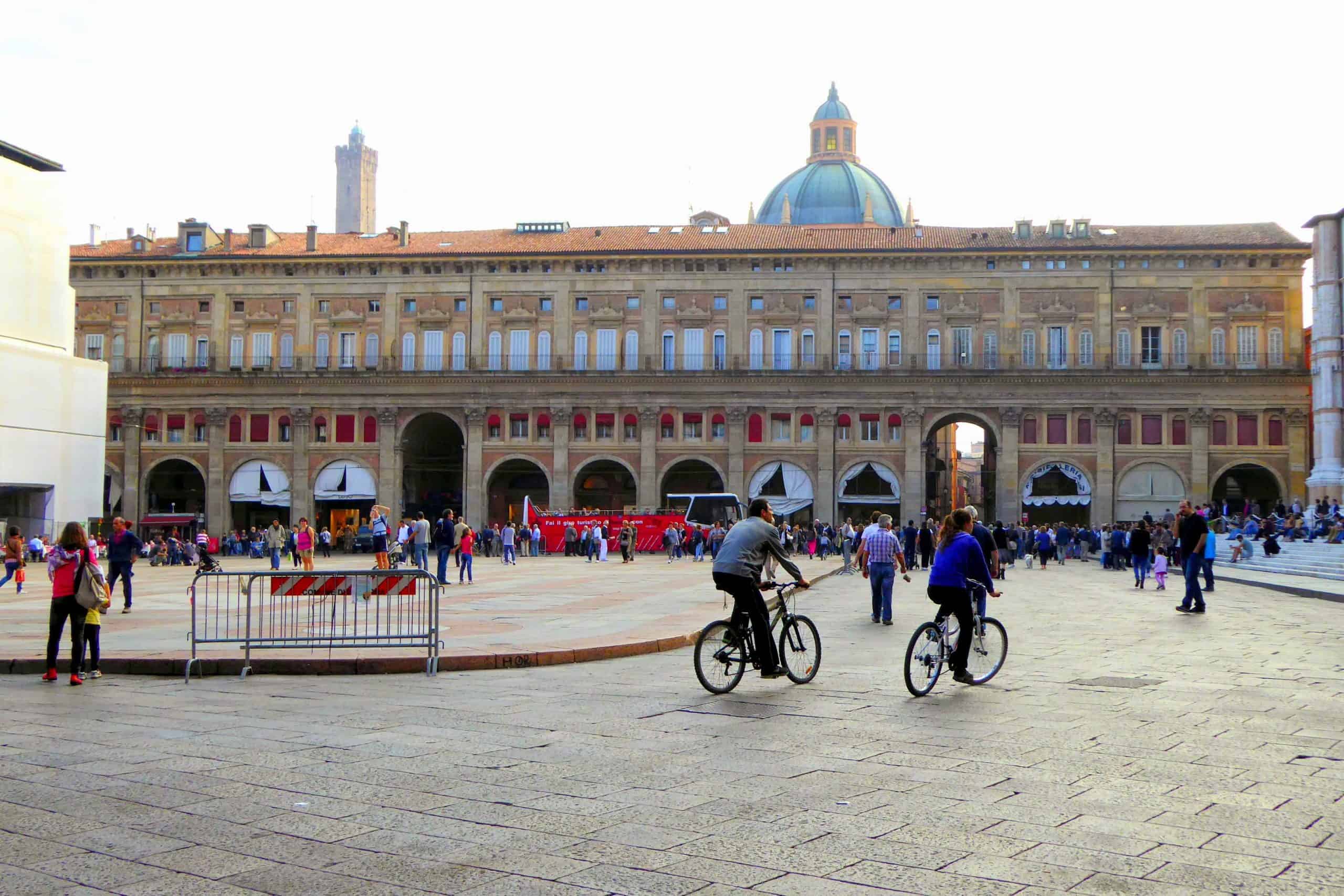
The “third place”
I’ve always been fascinated by the sociological concept of a third place, which acknowledges the importance of public spaces that serve as homes away from home. These are the places where people congregate, converse and enjoy each other’s company when they aren’t at home (first place) or at work (second place).
Third places are democratic in that they attract people from every background, age, and socio-economic class. I can think of no better example of a “third place” than the Piazza Maggiore.
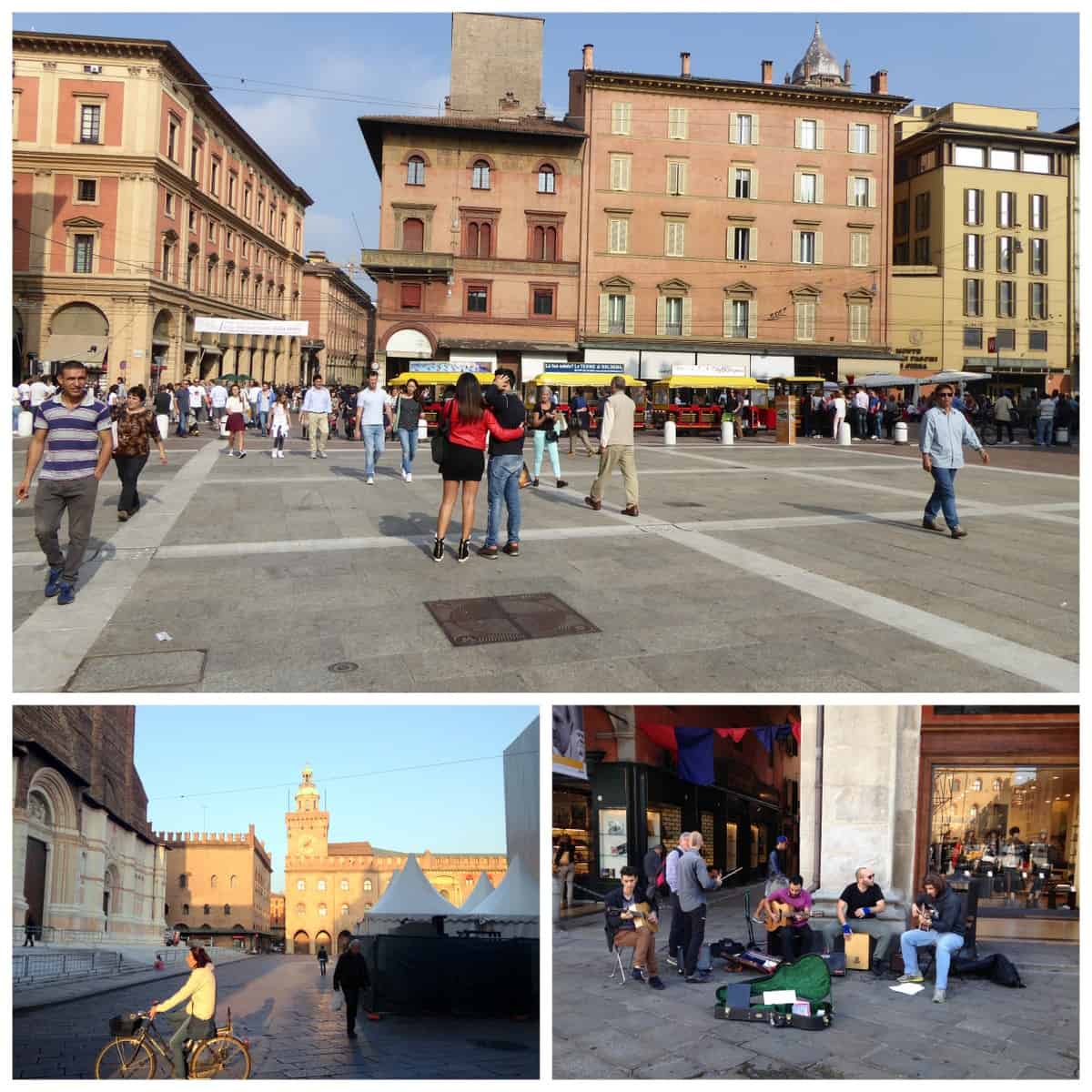

The piazza is always alive with people. Whether it is bicyclists on their way to work early in the morning, lovers walking hand-in-hand, musicians, tour groups, people relaxing over a cappuccino or apertivo, or retirees endlessly debating the state of the Italian economy.
On YouTube—Debaters on the Piazza: No sound (from our perch) but plenty of action
Almost every evening, there were fabulous shows and performances on the public stage beneath us. The headliner was Spettacolo luce-acqua-fuoco, a water, light and fire spectacular. There were street performers including jugglers and magicians.
On several nights, a bandstand housed singers, musicians and dancers. And on another night, we looked out the window and saw a flamethrower, who spontaneously attracted a large crowd.
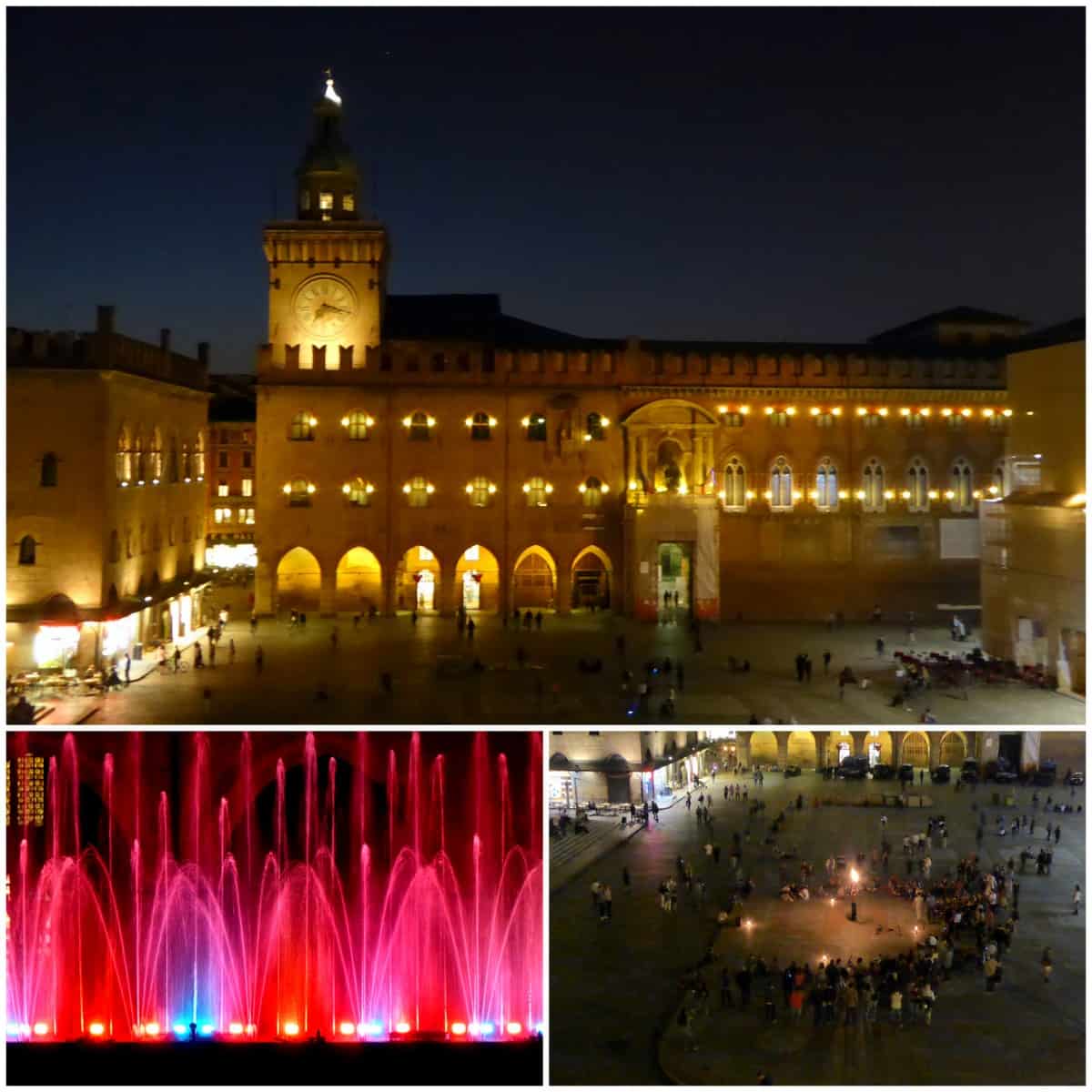
With such a large number of students (the University alone has about 85,000 students in its 23 schools) and politics that veer to the left, it shouldn’t be surprising that Piazza Maggiore is ground zero for the student and labor demonstrations in the city that erupt fairly regularly.
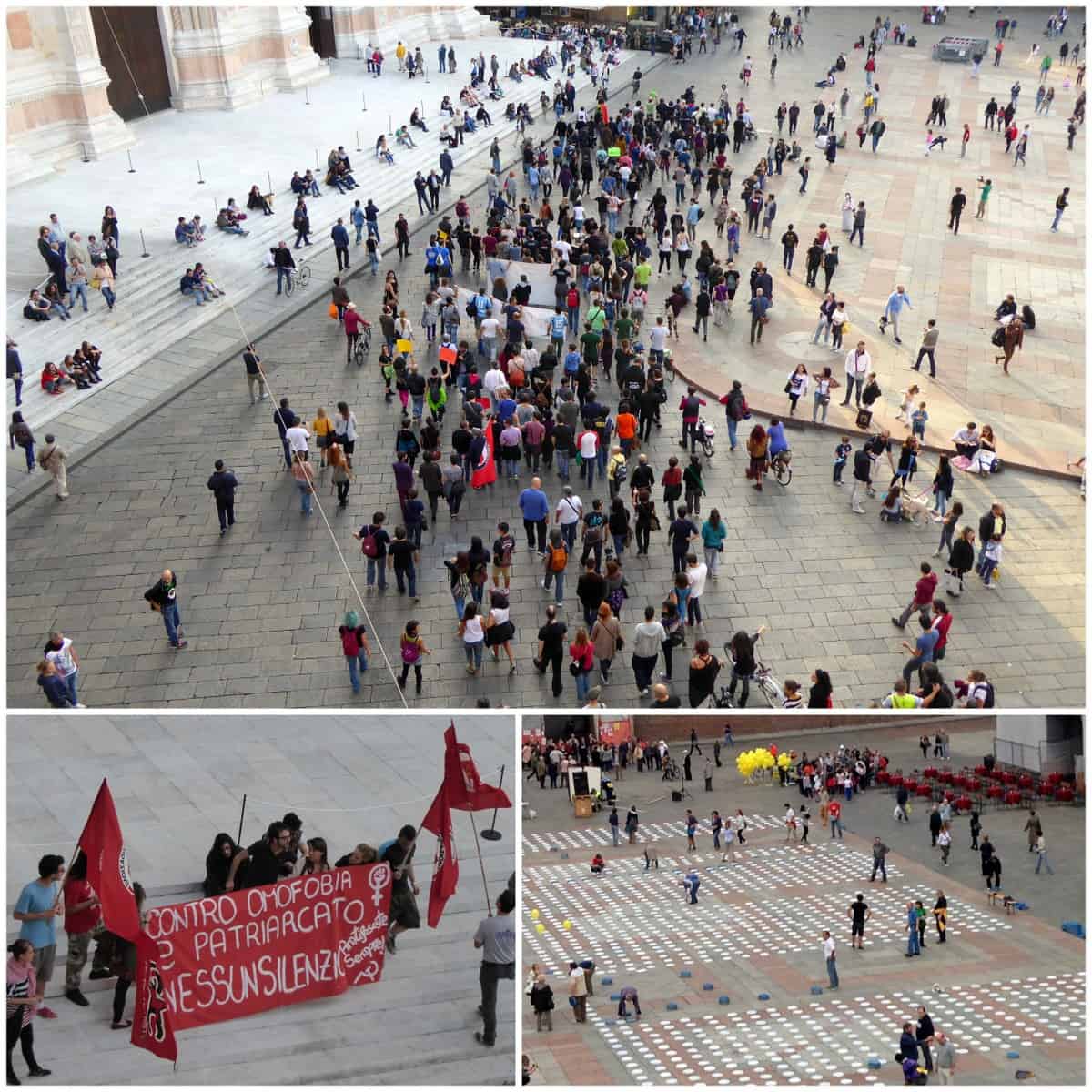
What goes up must come down
At 4AM each morning, we heard the whirl of mechanical street cleaners preparing the piazza for the next day. Several times during our stay, scores of workers descended (and ascended) on the square like Cirque du Soleil to erect stages for new events or deconstruct them.
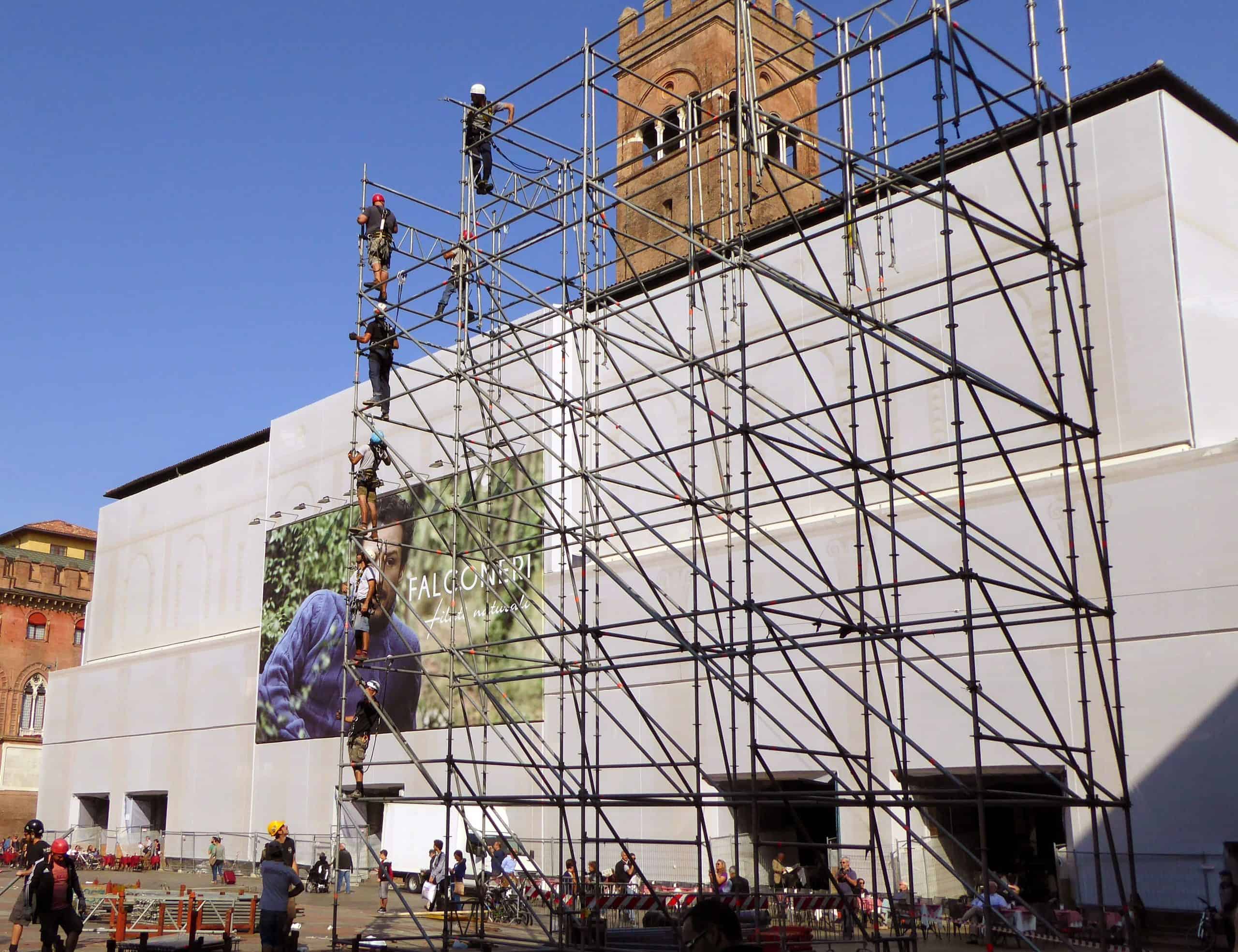
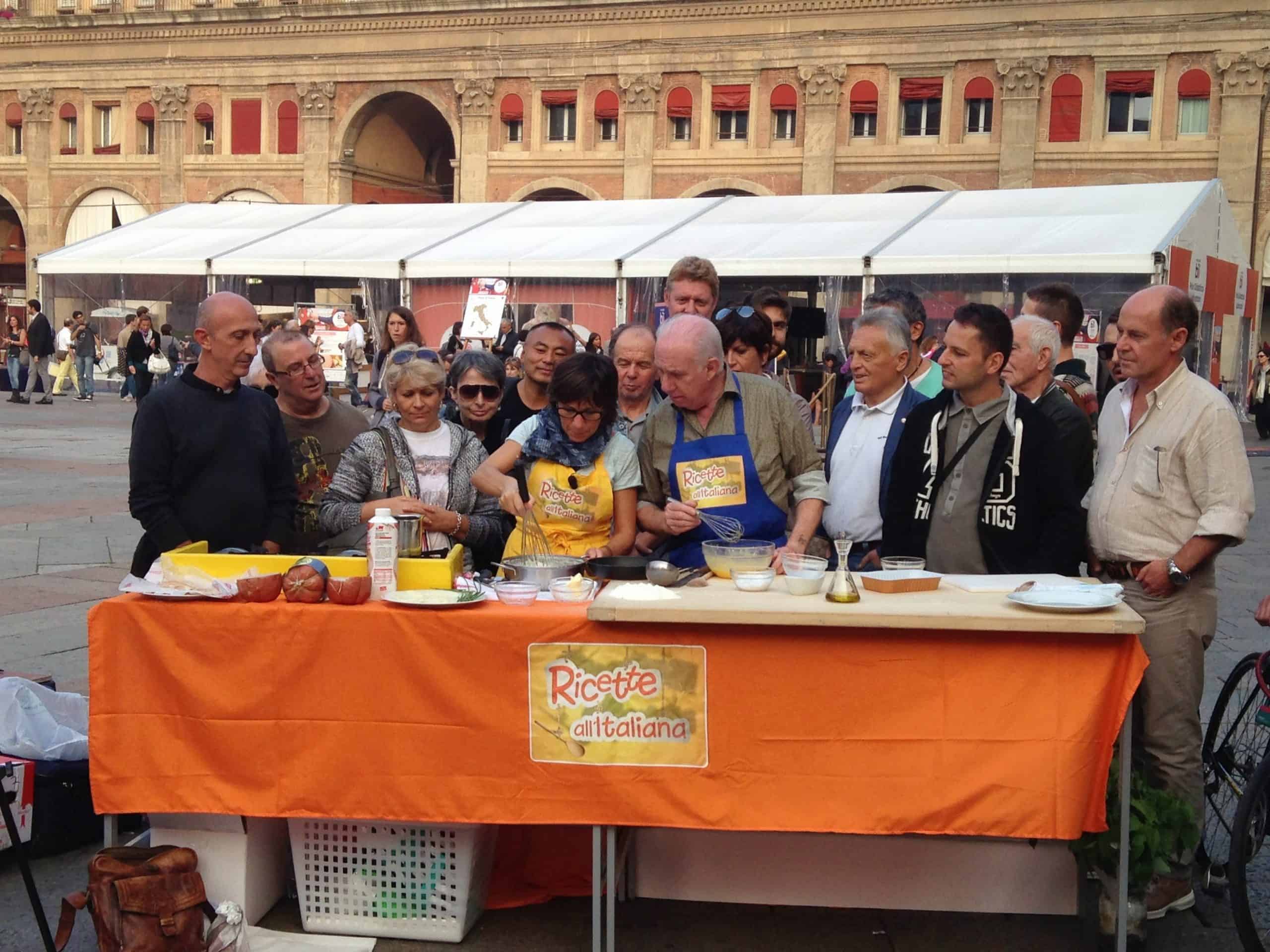
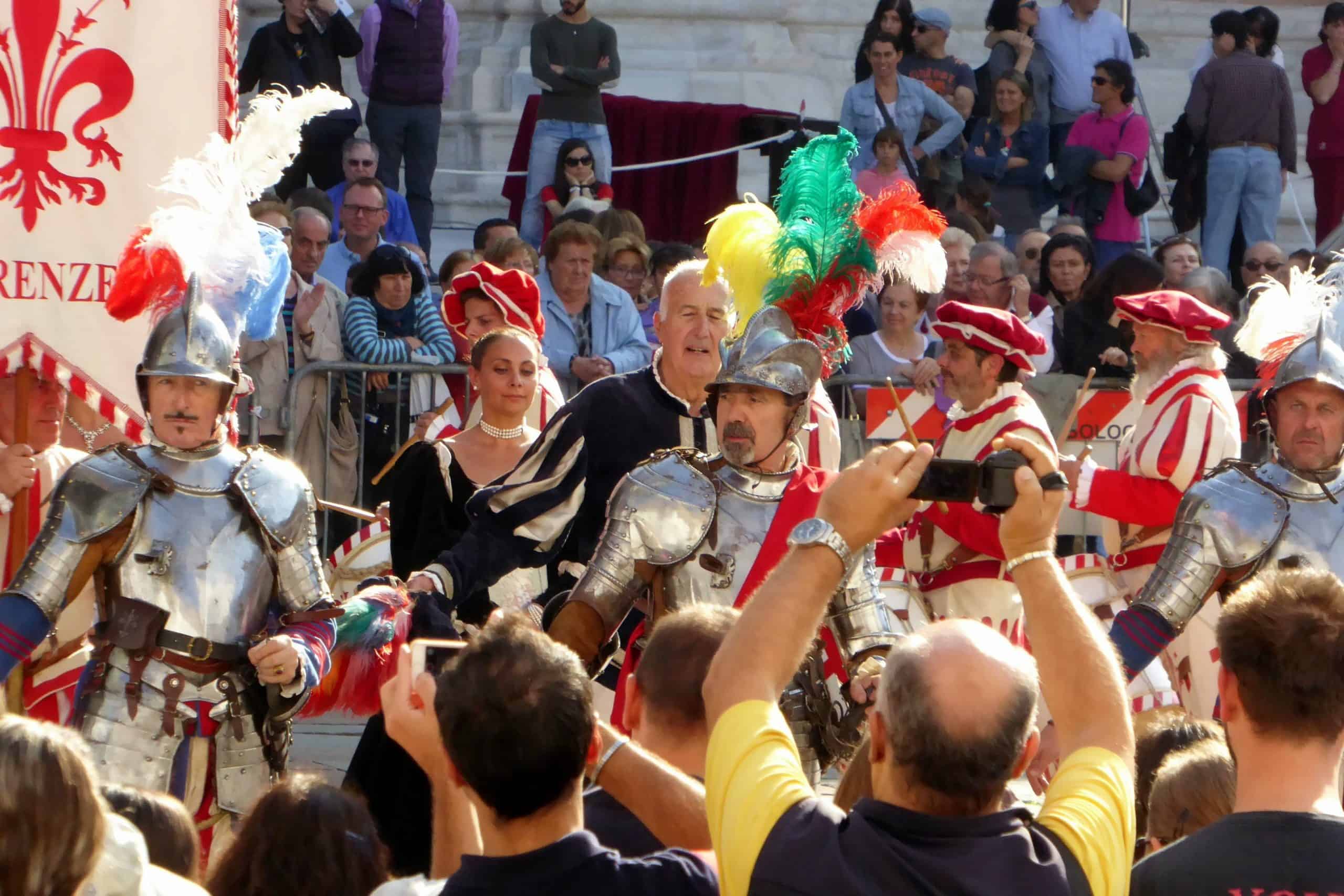
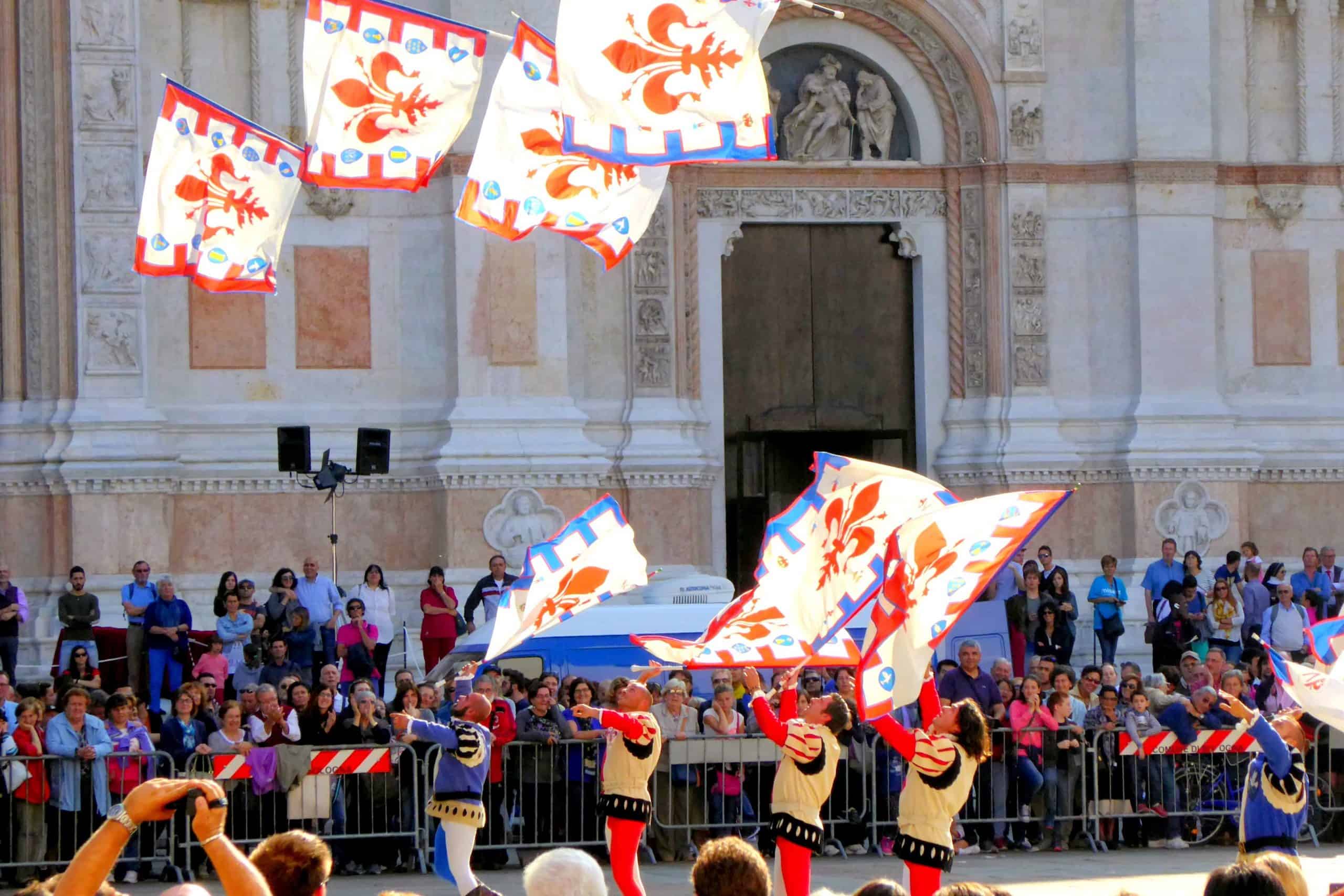
On YouTube—Drummers at the Spettacolo delle bandiere in the Piazza
Like other important monuments in Italy, Piazza Maggiore appears to be in a perpetual state of restoration (with a changing display of bold advertising placed on its scaffolding). A few years ago it was the west side of the piazza; this year, on the north. But it still remains an iconic and beautiful backdrop for photographs and memories.
Both as spectators from above and when mingling shoulder-to-shoulder on the ground, the rhythms of Piazza Maggiore are palpable. This living panorama may well be one of the most captivating views in the world.
All photo credits: Jerome Levine
IF YOU GO
ELSEWHERE ON THE WEB
- In the New York Review of Books: The Craving for Public Squares
Posts about Bologna and Emilia Romagna previously on More Time To Travel:
- Eating pizza in Bologna
- Visiting the oldest bakery in Bologna
- Italian pasta etiquette: What you need to know
- Celebrating mortadella in Bologna
- CSI Bologna: The pickpocket
- Celebrating World Pasta Day
- Visiting Majani: The Laboratory of Sweet Things
- Salame Rosa: Mortadella’s cousin
- A day in Bologna
- The warm hands that make pasta in Bologna
- A road trip on the Via Emilia
- Brisighella: Forget the spa and start pumping…olive oil
- Casa Artusi: A living museum of Italian home cooking
- The Malatestiana Library in Cesena
- Sant’Agata Feltria: On the trail of the white truffle festival
Save to Pinterest!!
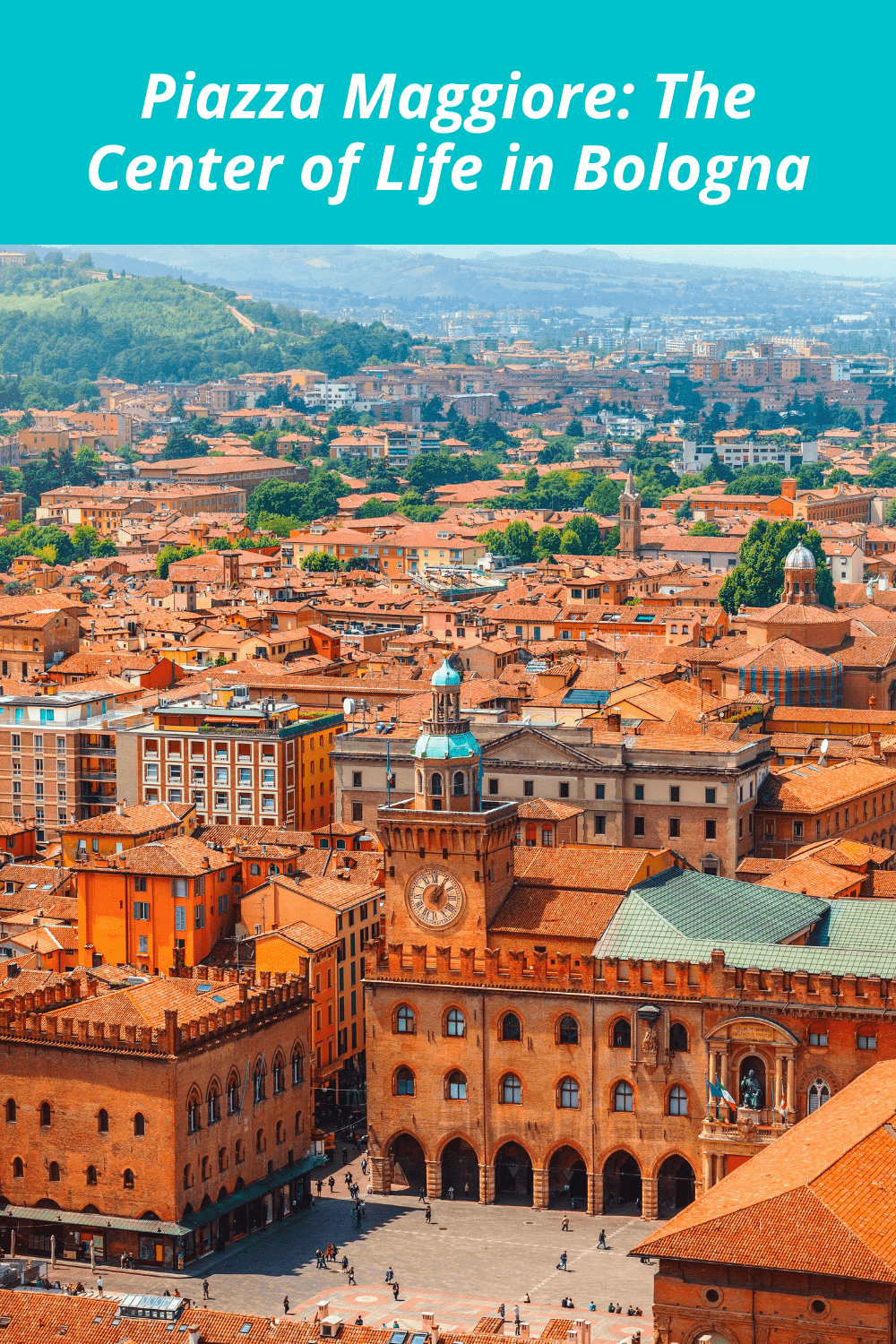
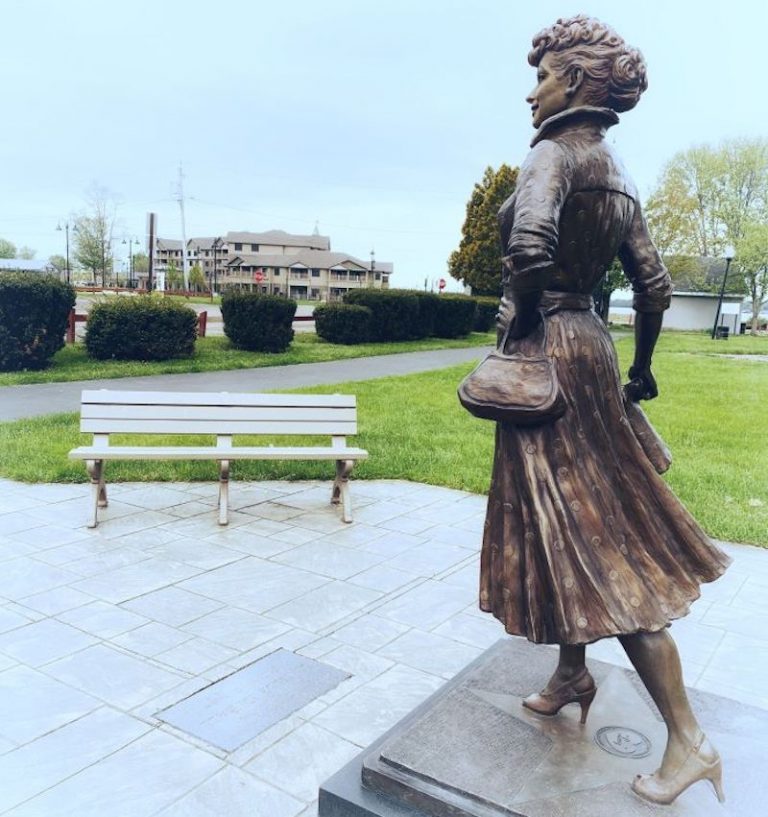
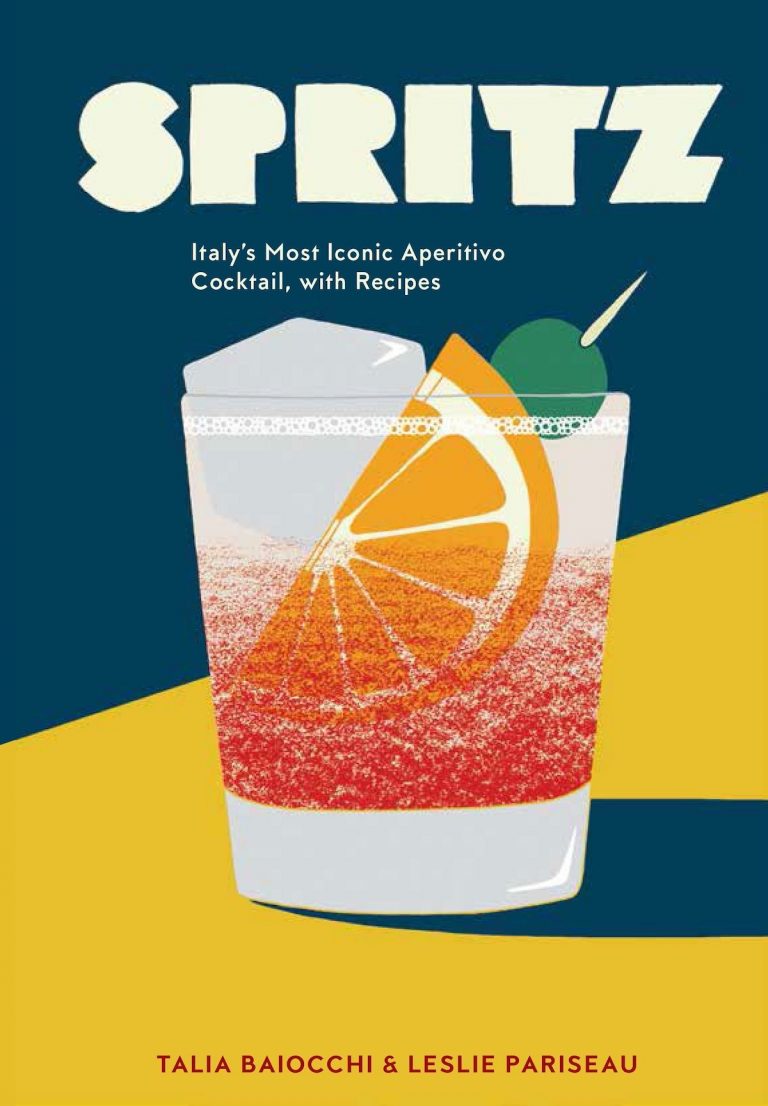


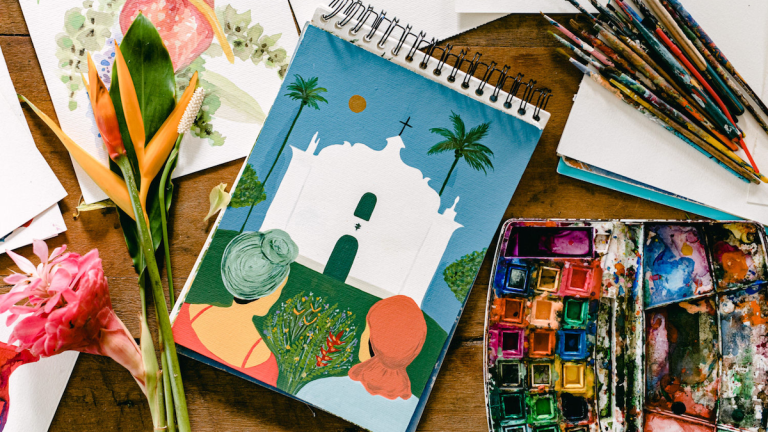
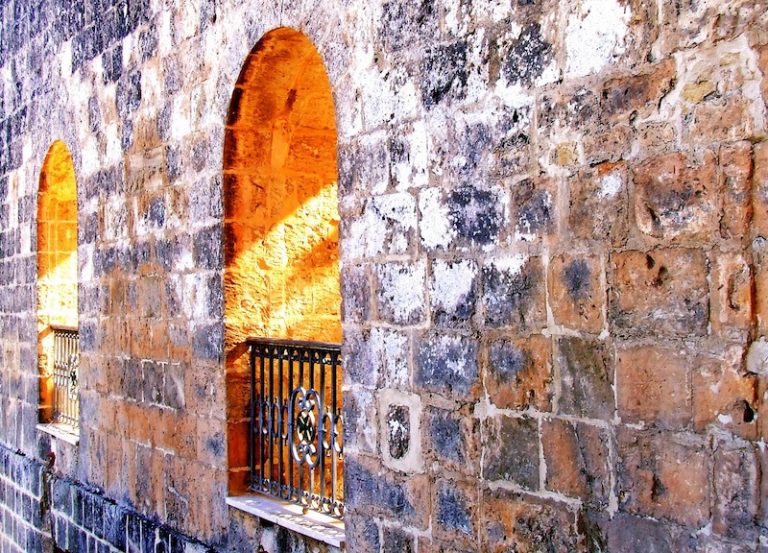
We remember well St. Mark’s square in Venice (especially the pigeons!). We haven’t visited Bologna, but we’d like to – and when we do (let’s be hopeful!), we’ll take in this piazza with its interesting history and people-watching…
One distinct difference between the two is that Piazza Maggiore isn’t as swarmed with tourists as is St. Mark’s.
But St. Mark’s definitely ranks up there on my list of great squares, too!
Best, Irene
I hadn’t heard of the third space concept before and really like the idea – and how you’ve shown how it’s used in Bologna.
Love the vibrancy of Piazza Maggiore shown in your pictures.
It’s a great third place!
I think I was there a few days later than you, so I missed all these wonderful celebrations. But, it is still a spectacular city to visit sans events on its own. Lovely post Irene
I’m glad you enjoyed it too! It seems like something is planned for almost every week of the year. If not, something spontaneous happens!
Great reminder of my visit to Bologna – thanks!
A Mortadello Festival and Cirque du Soleil? Piazza Maggiore seems to have it all. I love the concept of the “third place” – every city should have one.
It does! 🙂
I love how you described the piazza as a living, breathing, changeable entity in and of itself, a third place. To feel a sense of community, individuals must gather in a central place. It’s an opportunity that is lacking in so many modern cities and towns which were planned or modified with later trends and fads. It’s lovely to see the concept in action, and I couldn’t help but think of how the participants feel like they belong.
Agree totally, Betsy. It’s what makes many boomers want to leave their long-time homes and return to urban centers.
Piazza Maggiore looks wonderful. I love these bustling city centers in historic places. The architecture is always so interesting. Would love to be sitting in that sidewalk cafe watching the action.
Even the church steps are a great place to see the action!
Bologna is definitely in our future! I love these quaint piazzas! We were in Florence recently and felt we had a similar experience.
Hope you have the opportunity, Suzanne. It is a city that we’ve returned to many times.
So interesting: its history, daily life and “personality.” I really enjoyed this article and your excellent photography!!
That’s an especially nice compliment coming from an excellent photographer like you!
I love the idea of a “third place” and enjoyed your history lesson of the Plaza Maggiore. What great luck to be able to rent an apartment looking over the plaza and have the opportunity to watch the crowds and celebrations below whenever you wanted, day or night. I love your photos and I can’t wait to see some of Italy in 2015!
I really like the concept of the “third place,” and now that you’ve mentioned it, I realize that it’s something that I miss from Malaysia now that I’ve returned to living in America. I need to start heading to some of the Third Places in my own town. I can certainly see why getting an apartment overlooking Piazza Maggiore was so appealing. It looks like you saw so much going on. Thanks for sharing it with us.
Bologna is such a great city, we loved it, and loved that Piazza Maggiore doesn’t get the crowds of tourists, even in the summer time.
What a wonderful lifestyle these central squares create for both the residents and visitors alike. Modern day town planners could all take a lesson.
Great photos 🙂
Bologna is a fantastic city, and we had a lovely time visiting the city’s oldest bakery in the summer.